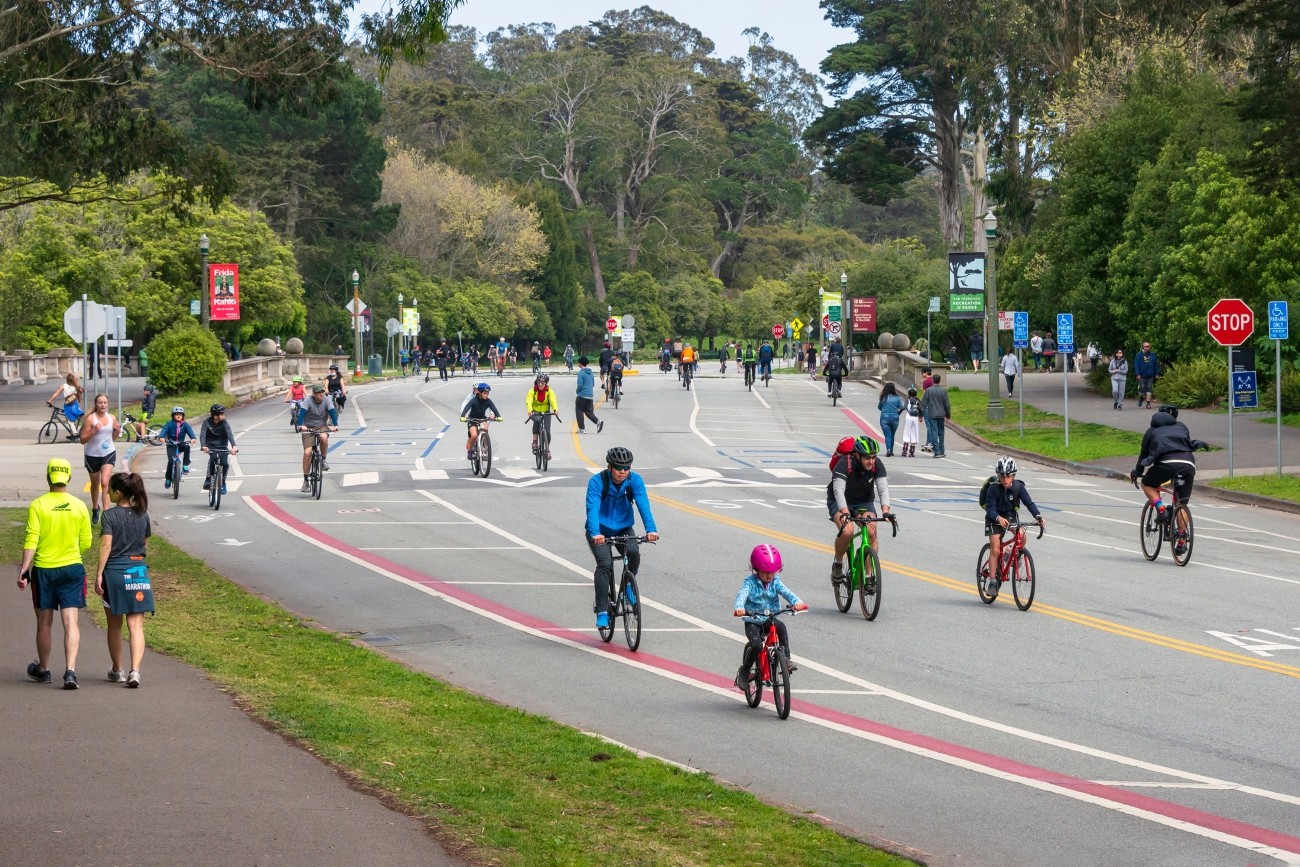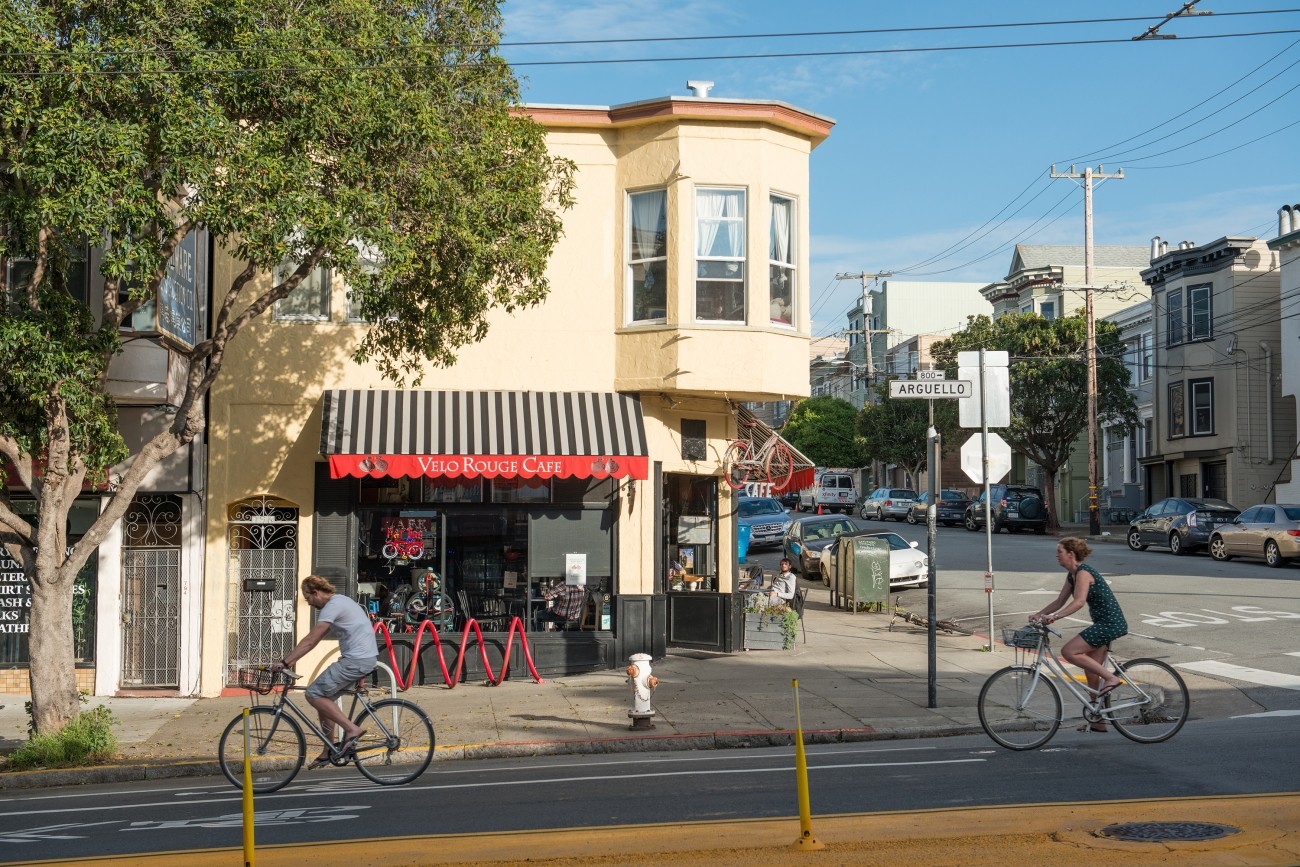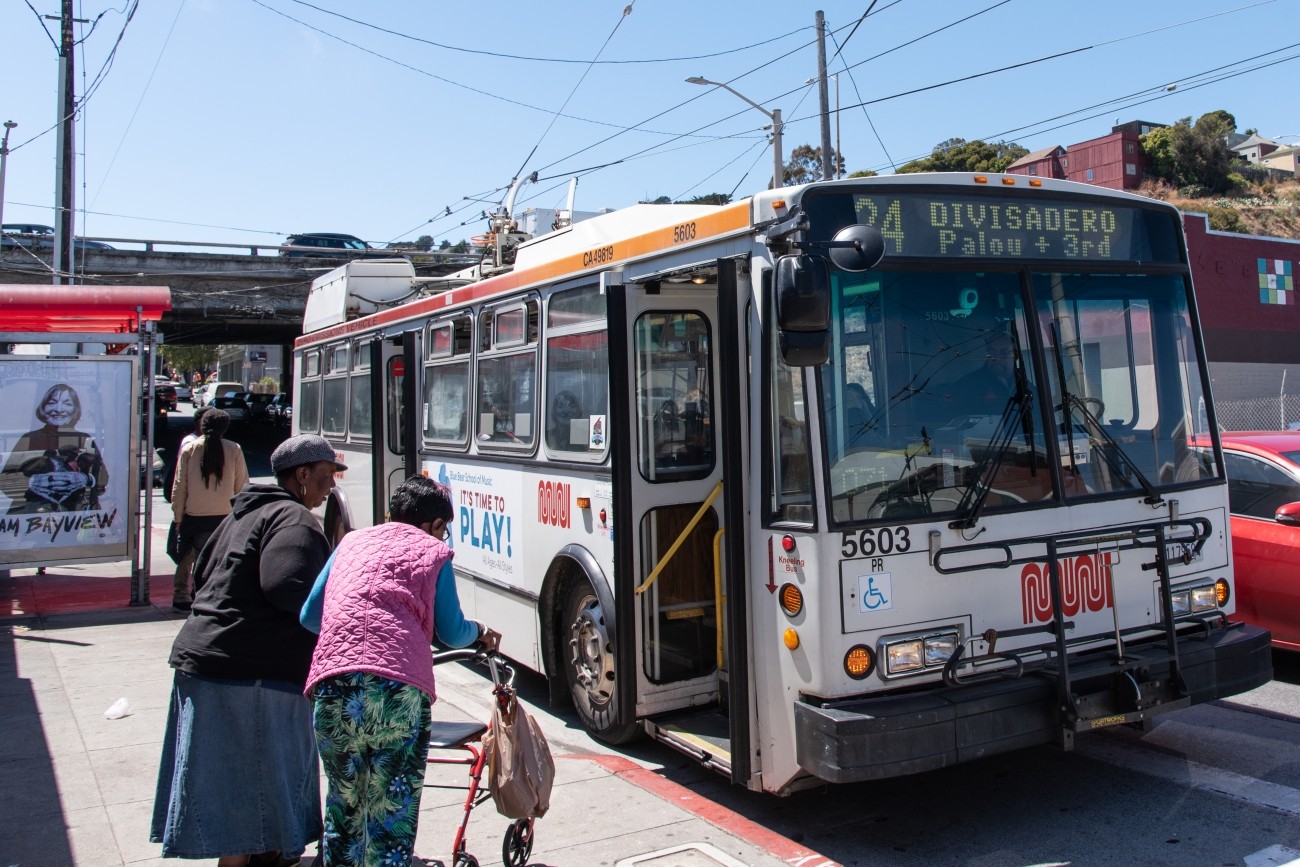
Photo by SFMTA Photography
Introduction
The Transportation Authority is studying how people travel to the eastern portion of Golden Gate Park (from Stanyan Street to Crossover Drive), and what barriers exist to getting there, particularly for people living in Equity Priority Communities furthest from the park in Districts 3, 10, and 11. The study will coordinate with the Recreation and Parks Department and SFMTA’s Golden Gate Park Access and Safety Program, which is developing park access improvements and alternative configurations for John F. Kennedy Drive, which has been car-free seven days per week since April 2020.
This study was requested by District 10 Supervisor and Transportation Authority Board Member Shamann Walton following the Golden Gate Park Stakeholder Working Group and Action Framework Final Report.
Project Goals
The study will conduct outreach and review travel data to understand the following, focusing on residents who live Equity Priority Communities in Districts 3, 10, and 11:
- Who was traveling to the eastern portion of the park, including JFK, prior to San Francisco’s COVID emergency order and how were they traveling?
- Who is currently traveling to the eastern half of the park, including JFK, and how?
- Who is not traveling to the eastern half of the park, including JFK, today, but would like to? Among this group, why are they not traveling?
Timeline and Status
Summer 2021 to Fall 2021
Review existing studies
Fall 2022 to Winter 2022
Public outreach
Spring 2022
Final report
Project Partners
The Golden Gate Park - JFK Drive Access Equity Study is led by the Transportation Authority, in close coordination with the Recreation and Parks Department and SFMTA.
Cost and Funding
The Transportation Authority's Neighborhood Program is funding the study with $200,000 in half-cent sales tax funds.
Contact
Aliza Paz, Principal Transportation Planner or jfkequity@sfcta.org
Study Question Findings
1. From Equity Priority Communities within D3, D10, and D11, who used the eastern portion of GGP, including JFK Drive, before COVID-19?
- Less than half of the phone/ email survey respondents from each of the three districts were visiting the eastern portion of GGP at least a few times a month before COVID-19.
- Frequent visitors among survey respondents most often identified as Asian or Pacific Islander and White.
2. From Equity Priority Communities within D3, D10, and D11, who is currently using the eastern portion of GGP, including JFK Drive?
- The race/ethnicity of phone/email respondents remained relatively unchanged among frequent users of GGP, with frequent visitors identifying most often as Asian Pacific Islander and White.
- The share of respondents rarely (a few times per year) or never making trips to easter GGP increased in District 10 and District 11, but remained constant in District 3.
3. From Equity Priority Communities within D3, D10, D11, for people who do not use the eastern portion of GGP, including JFK Drive, as much as they would like, why and what are the barriers?
- About half to two-thirds of phone/email respondents want to use the park more often than they currently do. Of these respondents, the most common reported barriers are related to parking availability and cost and the overall trip to eastern GGP taking too long.
- In focus groups, participants expressed that the cost of parking in the Music Concourse Garage is a barrier, transit options are slow, indirect, or unreliable, protected bike lanes would reduce barriers and improve safety for bike trips, and that access barriers for seniors need to be considered.
4. From Equity Priority Communities within D3, 10, 11 how has the closure impacted the desire / ability to visit the eastern portion of GGP, including JFK?
- About half to two-thirds of phone/email respondents want to use the park more often than they currently do. Of these respondents, the most common reported barriers are related to parking availability and cost and the overall trip to eastern GGP taking too long.
- About half of respondents stated that they do not visit the eastern portion of GGP; 18% visit less and 31% visit the same amount or more often since JFK Drive became closed to cars full time.
- Of intercept survey respondents, 10% stated that they visit eastern GGP less often during COVID as a result of the JFK Drive closure.
- In focus groups, participants expressed that the removal of parking on JFK Drive made travel more difficult because of the loss of ADA parking, passenger loading, and free parking in the area.
5. From all districts, who is currently using the eastern portion of GGP, including JFK Drive?
- The race/ethnicity of intercept survey respondents are similar to the city overall, though respondents who identified as White are slightly overrepresented and Asian and/or Pacific Islander and Hispanic and/or Latinx are slightly underrepresented.
- Most intercept survey respondents reported living in zip codes within two miles of eastern GGP, though zip codes from across the city were provided, with about 10% partially or fully within D3, D10, and D11.
Equity Assessment
The equity assessment found pre-pandemic access equity to the park was poor or mixed for people traveling from Equity Priority Communities within District 3, District 10, and District 11.
The long-term JFK Drive alternative configurations put forward by SFMTA and Recreation and Park Department have the potential to improve access conditions from pre-Covid conditions. The Car-Free JFK alternative has the most impactful transportation programs included in the alternative definition to improve access to eastern Golden Gate Park as compared to other proposed long-term configurations.
However, each of the alternatives does present some areas of uncertainty or, in the case of the one-way vehicle access worsening conditions, due to the lack of definition around the location of ADA parking and passenger loading in proximity to destinations in the park, compared to pre-covid conditions.
Findings of alternatives
| Spatial | Temporal | Economic | Physiological | |
|---|---|---|---|---|
| Baseline (pre-covid) | Many barriers to access |
Many barriers to access |
Moderate barriers to access |
Moderate barriers to access |
| No closure |
|
|
|
|
| Full JFK closure |
|
|
|
|
| One-way vehicle access |
|
|
|
|





